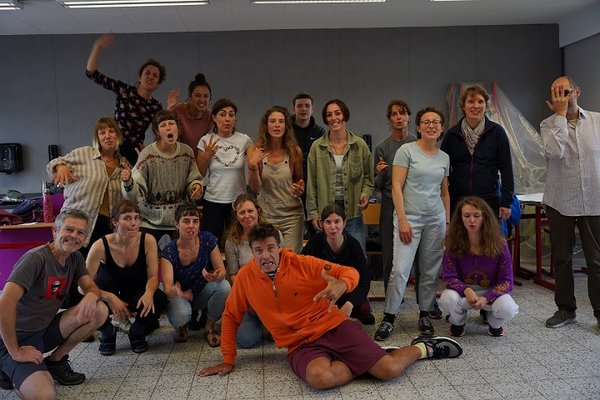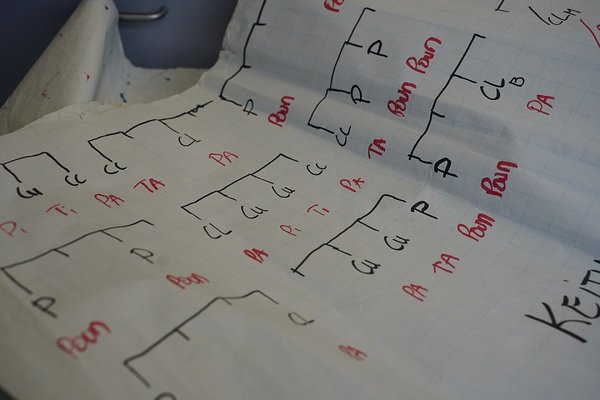Description
This course allows you to explore the body as a musical instrument through a range of disciplines such as singing, human beatbox, body percussion, konakol. We will approach these different practices via exercises specific to each of them in order to develop tools to express oneself in written and improvised collective compositions.
The objective is to provide vocal and rhythmic techniques (articulation, dexterity in delivery, modulation of phrasing, ragga, scat, beatbox sounds, sound effects,) and to arouse the creativity of the participants in order to allow them to develop their musical spontaneity during collective songs. We will also be able to approach noisy narration with the perspective of combining, if the group so desires, this research with theatrical, dance or circus forms.
Physical and energetic training
- Relaxation, breathing, toning, sound and physical massage.
- Study of standing, postural exercises, search for a good anchor when projecting sounds....
Our basis will be to create an area of availability and listening through relaxation, breathing and stretching exercises, promoting grounding, tonicity, and the relaxation that these practices require.
Around body percussion
Rhythmic exercises and games:
- Basic work on regularity, awareness of the intermediate spaces of rhythm with body percussion as a tool.
- Experimenting with the change in consciousness that one can have from a rhythmic formula over time.
- Body engagement, weight on the ground, sensation of support and laterality in rhythmic cycles.
- Binary and ternary time division. We will use body and vocal percussion to explore all these notions, then we will have fun with games on the repetition of typed sentences. We will also learn “patterns” of body percussion with which we will play polyrhythmic games.
Body and rhythm exercises, walking and clapping, question and answer games and collective compositions, discovery of basic sounds, exploration of different metrics via patterns.
Polyrhythms: exploration of different cultures of body percussion and polyrhythms (hambones, gumboots, stepping, Latin, West African polyrhythms, etc.).
We will discover rich, subtle and unexpected sounds, and we will develop our psychomotor skills around rhythmic group games. We will also set up polyrhythms based on existing pieces.
Furthermore, the voice/body percussion combination will allow us to take on psychomotor challenges, and to be able to come up with rhythm and melody on our own.
Around the voice
Exploring voice resonances:
- Awareness of the different spaces of resonance of the voice in the chest and the nuances of head voices (nasal, cranial, etc.).
- Experimentation with various types of modulations (trembling, jerky, percussive, sustained, etc.) and voice distortion games.
- Introduction to overtone singing.
- Different tracks to imitate the timbre of melodic instruments (brass, guitar, scratches, etc.)
Exploration of non-vocalized sounds:
- Awakening and awareness of our anatomy, “geographical” course of the areas of the mouth, nasal cavity and throat, stretching and contraction of the muscles of the head.
Articulation and vocalization:
- Develop power, precision and velocity in rapid flow.
- Make sounds when exhaling and inhaling air.
We will approach the voice by practicing overtone singing and imitating musical instruments.
How can we restore the timbre and sonority of a trumpet, a guitar, scratching with our voice? We will discover different spaces of resonance, and different techniques allowing us to give particular colors to our vocal sounds.
We will also do extensive work on the articulation of syllables via konakol (Indian vocal percussion practice which consists of singing syllables, while beating the cycle in the hands), via human beatbox (imitation of drum machine sounds ), via skat (percussive sung syllables) in order to develop dexterity and velocity in rapid vocal delivery.
Human Beatbox Technique:
- Presentation of the range of sounds commonly used by humanbeatboxers: percussion sounds, bass, trumpet, guitar, scratch, electronic sounds, slammed, rolled, trembled, hissed, sucked sounds...
- Dissociate and associate vocal and non-vocal sounds (How to emit mouth noises and vocal sounds simultaneously?).
- Manage your breathing, make sounds while holding your breath, inhaling and exhaling.
- Rhythm repertoire: practice of “standard” beatbox rhythms.
Collective compositions / Circle songs:
- Collective musical games, polyrhythms and complementarity in vocal orchestras.
- Collective improvisation techniques (questions and answers, call-variation, modular rotating phrase, etc.).
- Composing as a group: how can we structure our sound architectures?
We will also develop our creativity through the practice of circle songs, the principle of which is to bring together several people in a circle to sing simple musical loops that can be superimposed. We will take advantage of these experiments to approach the principles of multi-voice compositions (rhythmic and melodic complementarity, harmonization, understanding of cycles and awareness of placements, concept of plans, etc.) in order to develop an understanding of sound architecture.
How to play with silence, feel the musical cycles, find your bearings in relation to a fixed pulsation, be aware that a harmony supports us, understand the different “roles” present in a circle song (bass, accompaniment, melody, solo) , inventing structures, finding a balance in the group according to the potential, desires and possibilities of each person in order to create our vocal and rhythmic identity and to take liberties in composing with these different elements?
Other possible areas on the program:
Movement-sound correspondence:
- Rhythm in the body, which body sets the rhythm?
- How can the dynamics of movement respond to sounds?
- Creation of characters from voices, games of correspondence between gestures and sounds, how does the body show sound?
The noisy narration:
- Journey into the sonic imagination with and without a search for musicality. What are the sounds telling us? What can we tell with sounds?
From a proposed framework, participants will attempt to construct a narrative based on sound effects and sounds without resorting to words.
Research on concrete, stylized or evocative sound effects, materials, the sensuality of sounds, the effects of movement in sound... Crushing, stretching, space, water in channels, air: aspiration /exhalation, fire, machines, electronics, monsters, animals, voice, nature, the elements… Sounds conducive to developing sonic expressiveness… to be expanded according to the desires and motivations of the participants…
What moods can we create?
What atmospheres should be installed?
How to construct a noisy narrative?
How to compose an audio story?
Required level
Open to everyone
Any questions?
If you have any questions, please refer to the practical information!


